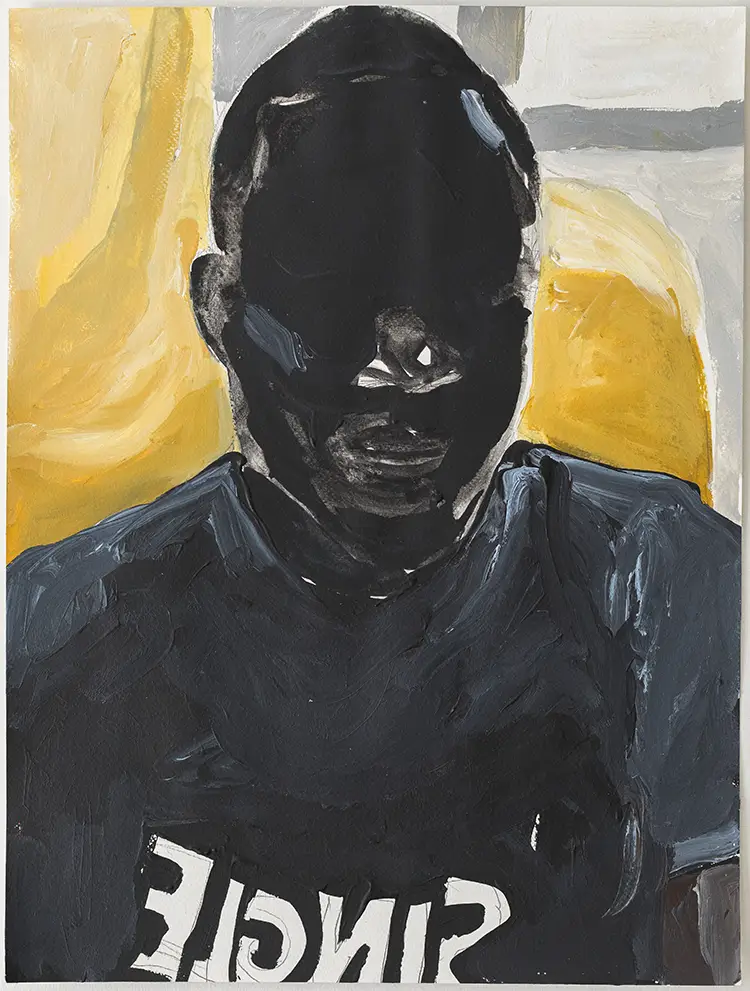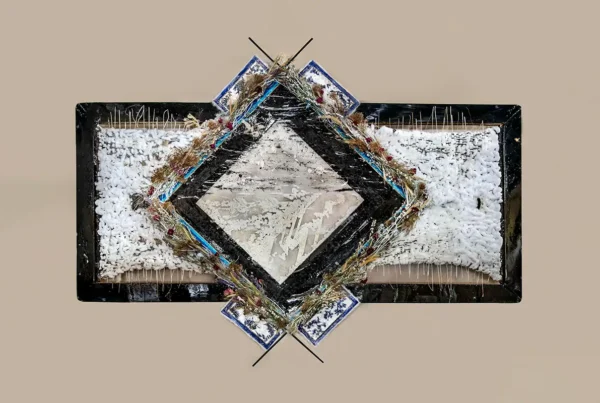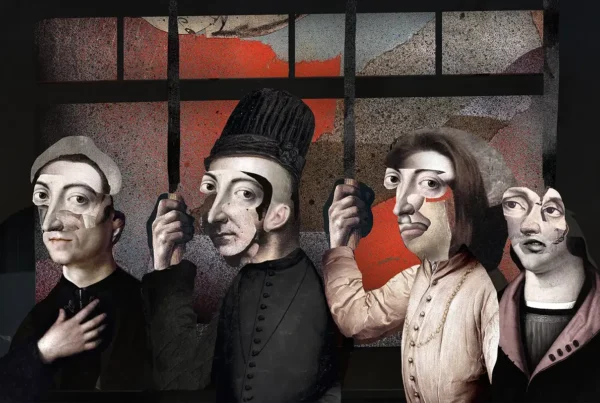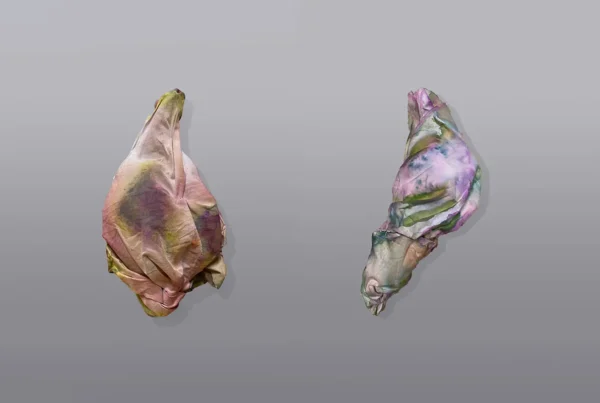“My work often reflects this constant movement—between places, identities, and memories.”
A Journey in Search of Self
The art of Didier Viodé is inseparable from his migratory experience. Born in Côte d’Ivoire with roots in Benin, he grew up shaped by a confluence of cultures that carved deep impressions into his sense of self. This complex cultural layering not only defined his worldview but became a guiding force in his artistic exploration. Viodé’s visual narratives are often grounded in the movement between spaces—geographical, emotional, and psychological. His works are less about arriving at fixed identities and more about navigating the fluid, often ambiguous in-between. In this continuous search for meaning, Viodé positions the human figure—particularly the face and body—as both subject and metaphor, engaging the viewer in a quiet, intimate dialogue.
His foray into art began as a child, using drawing as a silent but powerful means of communication. It was a refuge, a personal language that allowed him to express emotions that words could not contain. During his academic training at the Beaux-Arts in France, he discovered that art held the capacity not only to articulate the personal but also to speak to broader social and political concerns. This realization marked a turning point. He began producing work centered around themes of migration and memory, often drawing anonymous faces encountered on the street. These early pieces laid the foundation for a career rooted in reflection and resistance—a visual record of identity in flux.
Viodé’s art is a compelling intersection of simplicity and expression. Often minimalist in form, his style remains highly emotive, gestural, and responsive to the contexts surrounding him. He does not shy away from complexity, choosing instead to tackle layered issues such as displacement, climate change, and memory. Whether portraying figures in transition or interpreting environmental shifts, he consistently foregrounds the human element. His aesthetic, while restrained in detail, speaks volumes through posture, contour, and suggestion. These recurring themes signal a deep commitment to documenting the lived experiences of those who, like himself, have crossed many thresholds in pursuit of belonging.
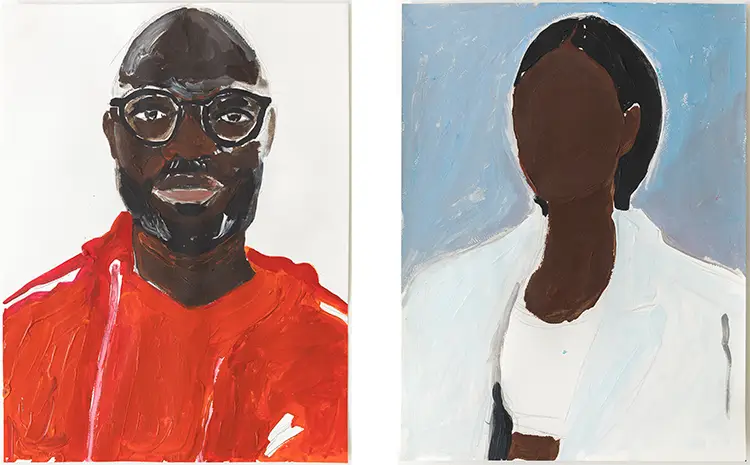
Didier Viodé: The Silence of Ink and the Echo of Sound
For Didier Viodé, artistic creation is as much about atmosphere as it is about action. His studio environment is designed to cultivate focus and fluidity, with natural light playing a central role. Light, for him, is not just illumination—it is a form of energy that influences mood and clarity. He gravitates toward spaces that are both physically bright and emotionally calm. Music is another vital component, not merely as background but as an active agent in shaping his mental state. Often accompanied by the radio, his sessions become immersive experiences, in which the outside world recedes and intuitive movement takes over. In this state, distractions melt away, allowing Viodé to engage fully with his materials and his message.
His process begins not in the studio but in the world outside. A chance conversation, the sound of footsteps, a fleeting glance—these seemingly mundane experiences often trigger the spark for new work. Viodé collects visual references with his phone, building an archive of faces, scenes, and impressions that later resurface in his drawings. He rarely relies on memory alone, preferring to recontextualize real images into his visual language. This method underscores his belief in capturing the immediacy of experience, while also reshaping it into something universal. Working in series allows him to sustain these investigations over time, offering viewers multiple entry points into his thematic concerns.
Among his influences, Viodé draws inspiration from both academic movements and personal memories. The experimental ethos of the Support/Surface movement and Arte Povera’s radical materiality left a strong mark during his formative years. But equally powerful is the imprint of his African childhood—the textures, colors, and sensory depth of daily life that continue to inform his imagination. Artists such as Joseph Beuys, Jacob Lawrence, and Kerry James Marshall resonate deeply with him for their ability to merge political commitment with aesthetic innovation. These reference points reflect a dual allegiance: to a formal artistic lineage and to a lived cultural heritage that is always evolving.
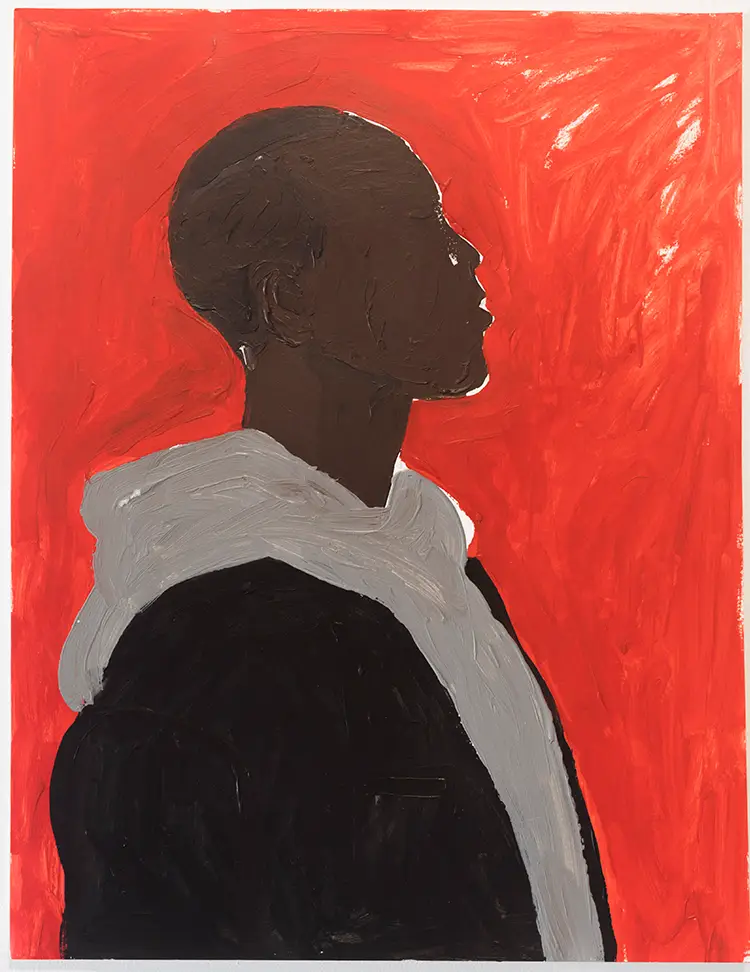
The Walkers: Art as Witness and Movement
One of Didier Viodé’s most personal and politically resonant works is the 2007 series Les Marcheurs—translated as The Walkers. This body of work features elongated human figures painted on expansive, free-hanging canvases designed to move with the air. The installation’s interaction with the wind was no accident. It symbolized the inherent instability of life on the move, a metaphor for migration and the fragility of belonging. These walkers are not just representations of physical displacement; they speak to an existential condition of searching, leaving, and never fully arriving. Through this series, Viodé makes a statement about the universal nature of migration—it begins, he suggests, the moment we are born and leave the womb.
Unlike his later, more colorful creations, Les Marcheurs carries a subdued, almost haunting palette, echoing the emotional weight of its subject matter. The figures are stripped of identity, yet they are not anonymous. Each one, in their stretched, ethereal form, carries a story etched into their posture and presence. Viodé’s decision to avoid fixed frames for the canvases invites movement and breath into the work, allowing the viewer to witness the journey as something alive and ongoing. These figures are caught in motion, never still, much like the stories they represent—migrant lives that refuse to be pinned down or neatly categorized.
This series marked a significant moment in Viodé’s career—not only as an artistic breakthrough but as a clear declaration of intent. With Les Marcheurs, he established himself as a voice capable of bearing witness to collective histories through a deeply personal lens. It showcased his ability to balance aesthetic simplicity with layered meaning, making space for reflection without dictating conclusions. The series continues to hold special significance for him, serving as a cornerstone for his ongoing explorations into identity, displacement, and the quiet endurance of the human spirit.
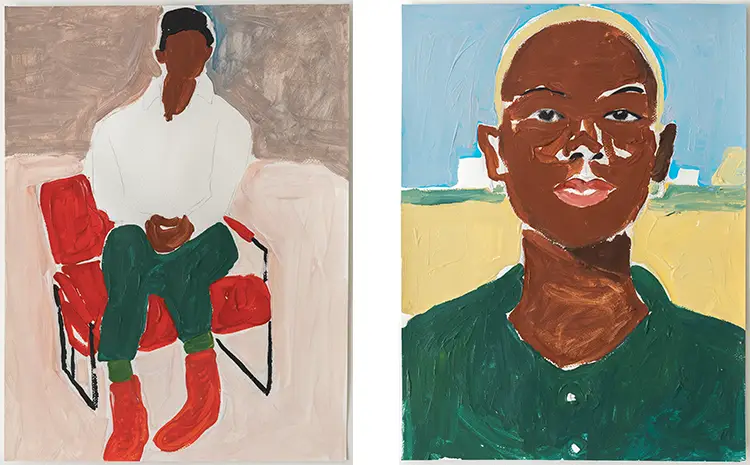
Didier Viodé: Dreams in Ink and Immersive Space
Didier Viodé’s current aspirations push beyond the canvas, pointing toward an art form that envelops the viewer entirely. He envisions an immersive installation that blends multiple media—drawing, ink, painting, photography, and video—into a unified environment. This dream project is less about showcasing finished works and more about crafting a space that mirrors the complexity of his internal landscape. Visitors would not simply observe but enter a world shaped by his perspectives, walking through corridors of memory, identity, and transformation. It’s a bold expansion of his practice, bringing together the tactile intimacy of his drawings with the experiential depth of moving image and sound.
The idea reflects Viodé’s desire to create art that engages all the senses. For him, immersion is not a trend but a necessity—it mirrors the emotional immersion he himself undergoes when creating. By integrating soundscapes and visual fragments from his life and work, he hopes to provide audiences with an encounter that is both poetic and physical. This kind of spatial storytelling allows for a deeper resonance, particularly with the themes he has long explored: migration, personal history, and the interconnectedness of humanity. It would also serve as a bridge between his solitary studio practice and a more communal, participatory form of art-making.
Even as this dream remains in development, its conceptual foundation is already evident in the way Viodé approaches his existing body of work. His continued interest in blending media, interpreting the human figure, and engaging with both personal and political issues suggests that this immersive vision is a natural progression. It is not merely an expansion of scale but a deepening of intention. By opening up his artistic universe to others in this way, Viodé is not only sharing his perspective—he’s inviting viewers to consider their own positions within the ever-shifting landscapes of memory, movement, and identity.
